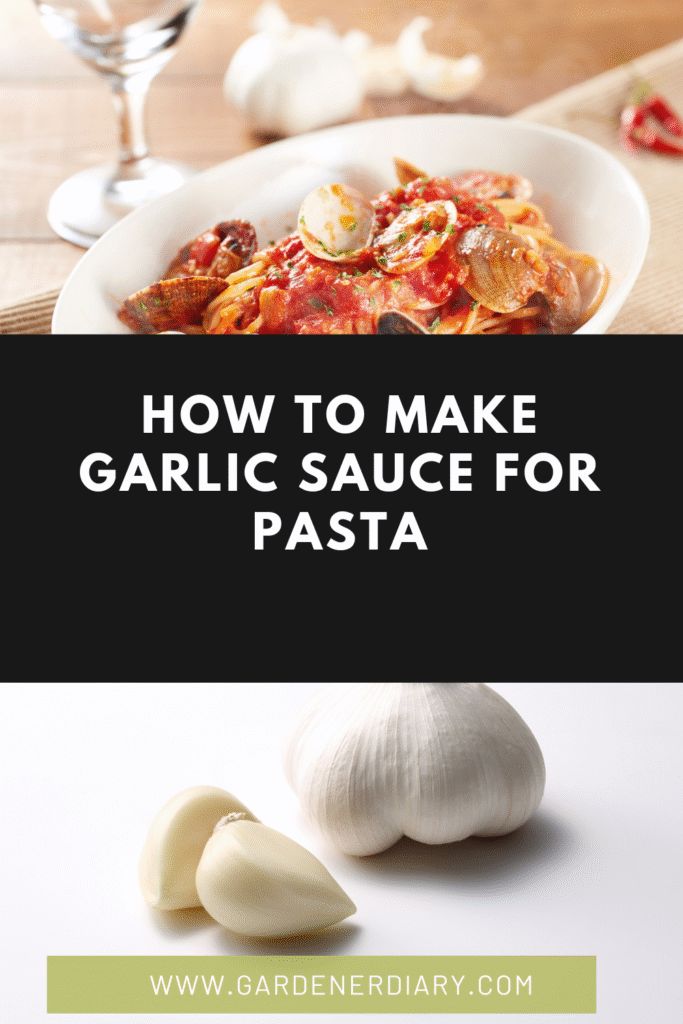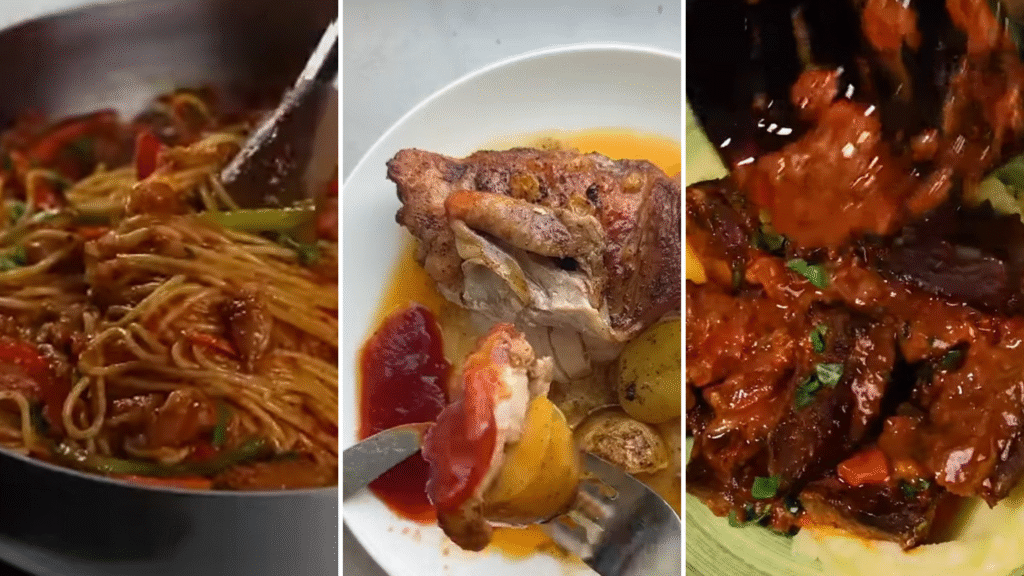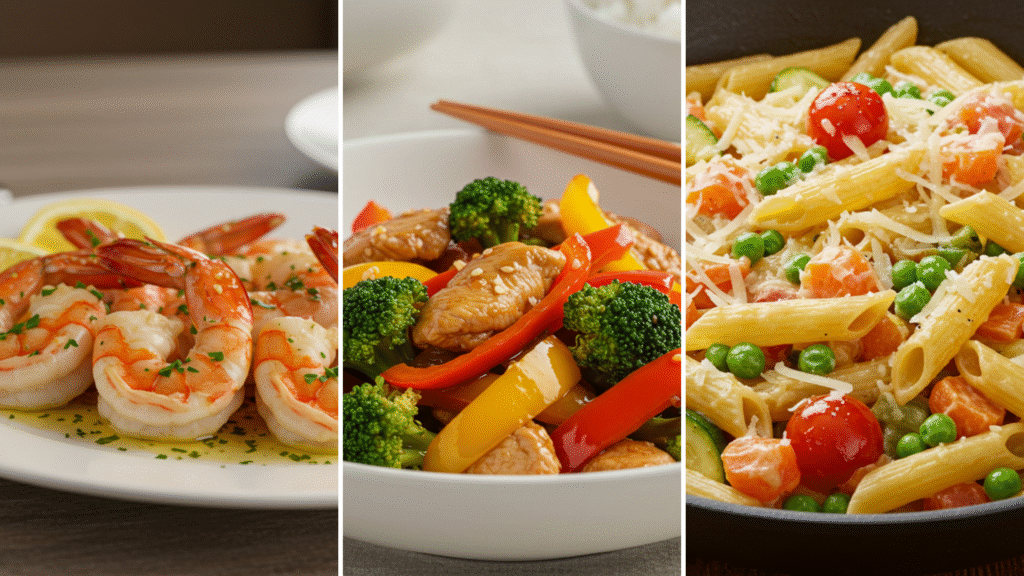Garlic sauce for pasta is one of those simple dishes that never fails to impress. The aroma of fresh garlic sizzling in butter or olive oil can make your kitchen feel like an Italian trattoria. This sauce is versatile, easy to prepare, and works with almost any type of pasta.
Making garlic sauce from scratch gives you complete control over the flavor, texture, and richness. You can make it creamy and comforting or light and fresh. Once you learn the basics, you can adjust the ingredients to suit your taste and experiment with different variations.
If you are working with fresh garlic, you can save time by following how to peel garlic quickly before you begin.
Key Takeaway:
- Fresh garlic gives the best flavor and aroma.
- Do not brown garlic to avoid bitterness.
- Reserve pasta cooking water to adjust sauce consistency.
- Customize with herbs, cheese, and spices.
- Pair with bread, salad, or protein for a complete meal.
Ingredients You Will Need
- Fresh garlic cloves (6–8 cloves for a strong flavor, fewer for a milder taste)
- Butter or extra virgin olive oil (3–4 tablespoons)
- Heavy cream, milk, or vegetable broth (1 cup)
- Salt and freshly ground black pepper (to taste)
- Pasta of your choice (spaghetti, fettuccine, penne, linguine, or farfalle)
- Fresh herbs (parsley, basil, or oregano)
- Optional: grated Parmesan cheese, red pepper flakes, lemon juice, or white wine
If you want a smooth garlic base without chopping, check how to make garlic paste or use a garlic press for convenience.
Step-by-Step Method
Step 1: Cook the Pasta Properly
Start by filling a large pot with water. Add a generous pinch of salt before bringing it to a boil. The salt not only seasons the pasta but also enhances the final dish. Add your pasta and cook until al dente according to the package instructions.
Before draining the pasta, scoop out one cup of the starchy cooking water. This liquid is valuable because it helps bind the sauce to the pasta later. Drain the pasta and set it aside.
Step 2: Prepare the Garlic
Fresh garlic is the star of this recipe. Peel the cloves and mince them finely. Using a garlic press gives a smoother texture and releases more flavor. If you want a milder garlic flavor, lightly crush the cloves instead of mincing them.
You can prepare garlic in advance and store it following how to freeze garlic so it’s ready when you need it.
Step 3: Create the Sauce Base
Place a large skillet or saucepan over medium heat. Add butter for a rich, creamy flavor or olive oil for a lighter, more Mediterranean taste. Once the butter melts or the oil warms, add the minced garlic. Stir constantly for 1–2 minutes until it turns fragrant.
Do not let the garlic brown, as it can turn bitter. The goal is to release its natural sweetness and aroma.
Step 4: Add Liquid Ingredients
Pour in the heavy cream, milk, or vegetable broth. Each option gives a different result:
- Heavy cream makes the sauce thick and luxurious.
- Milk creates a lighter but still creamy texture.
- Vegetable broth keeps it dairy-free while still flavorful.
For added complexity, you can also add a splash of white wine at this stage. Let the sauce simmer gently for about 5 minutes. This allows the flavors to combine and the sauce to thicken slightly.
Step 5: Season the Sauce
Season the sauce with salt and pepper to taste. Add fresh herbs like parsley or basil for freshness. If you like a bit of heat, sprinkle in red pepper flakes.
For a cheesy depth, stir in grated Parmesan. This helps thicken the sauce and adds a savory note.
Step 6: Combine Pasta and Sauce
Add the cooked pasta to the skillet. Toss gently so every strand or piece is coated in the garlic sauce. If the sauce is too thick, add a small amount of the reserved pasta cooking water until you reach your preferred consistency.
Step 7: Serve the Dish
Serve immediately while the pasta is hot. Garnish with more herbs, extra Parmesan, or a squeeze of lemon juice for brightness.
If you want to make a full garlic-themed dinner, consider pairing it with garlic bread or garlic toast.
Flavor Variations for Garlic Sauce for Pasta
One of the best things about garlic sauce is its flexibility. You can adapt it to match different pasta dishes:
- Creamy Garlic Alfredo – Add extra cream and Parmesan for a rich, indulgent version similar to Alfredo sauce.
- Garlic and Lemon Pasta – Add lemon zest and juice for a light, refreshing flavor.
- Garlic and Spinach Pasta – Stir in fresh spinach at the end for added color and nutrients.
- Spicy Garlic Pasta – Add more red pepper flakes for a fiery kick.
- Garlic and Mushroom Pasta – Sauté sliced mushrooms with the garlic before adding the cream.
You can also use similar preparation methods for other dishes, such as garlic sauce for chicken, garlic sauce for steak, or garlic sauce for prawns.
Pairing Ideas
Garlic pasta pairs well with a variety of side dishes and proteins:
- Sides – Fresh salads, roasted vegetables, or grilled asparagus.
- Proteins – Grilled chicken, baked salmon, or sautéed shrimp.
- Breads – Garlic bread, garlic toast, or flatbread.
If you enjoy experimenting with garlic flavors, you might want to try garlic sauce for pizza or garlic sauce for kebab for your next meal.
Nutritional and Health Benefits of Garlic
Garlic is not only flavorful but also offers several health benefits:
- Contains compounds like allicin that may support heart health.
- Rich in antioxidants that can help protect cells.
- May have mild antibacterial and antiviral properties.
- Can enhance digestion and boost flavor without excessive salt or fat.
To preserve these benefits while cooking, avoid overcooking garlic at high heat.
Storage and Reheating Tips
- Refrigerator – Store leftover garlic sauce in an airtight container for up to 4 days.
- Freezer – Freeze the sauce in portion-sized containers for up to 3 months.
- Reheating – Warm gently over low heat, adding a splash of milk or pasta water to restore creaminess.
You can prepare large batches and store them for convenience, similar to how you might prepare garlic confit in advance.
Frequently Asked Questions
Can I make garlic sauce without cream?
Yes, you can use olive oil or vegetable broth for a lighter version.
Can I use pre-minced garlic?
Fresh garlic is best, but pre-minced garlic can be used if you are short on time.
How do I make the sauce thicker?
Simmer the sauce longer or add more Parmesan cheese to thicken.
What is the best pasta shape for garlic sauce?
Long pasta like spaghetti or linguine works well for light sauces, while short pasta like penne or fusilli holds onto creamy sauces better.
Can I add vegetables to the sauce?
Yes, vegetables like spinach, zucchini, or mushrooms can be added for extra flavor and nutrition.
Can I make the sauce vegan?
Yes, use olive oil instead of butter, vegetable broth instead of cream, and skip the cheese or use a dairy-free alternative.
How can I make it more flavorful?
Use roasted garlic for a sweeter, deeper flavor. You can follow how to roast garlic in the oven for this variation.


